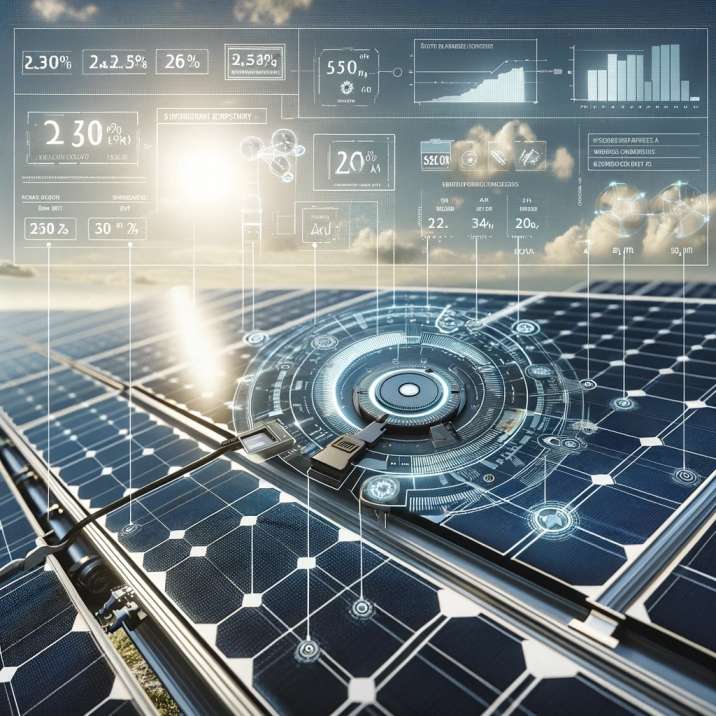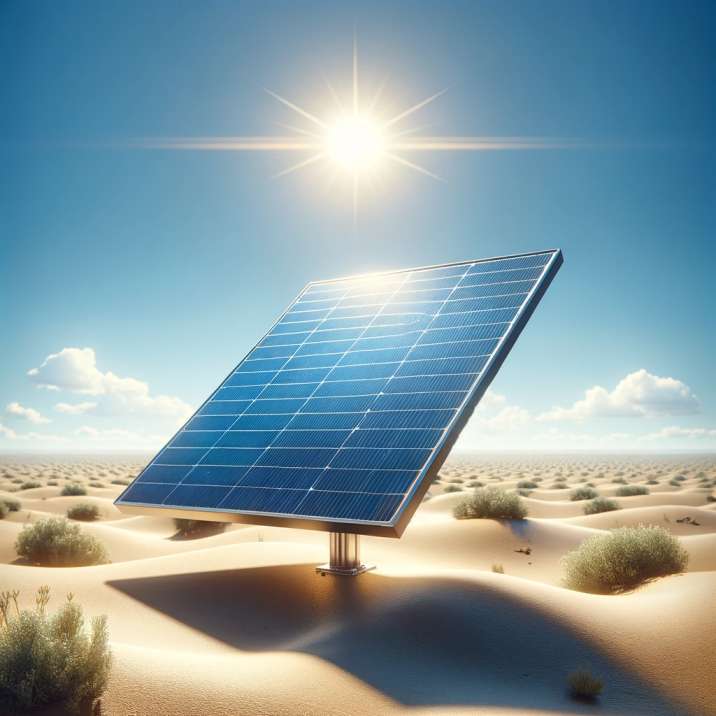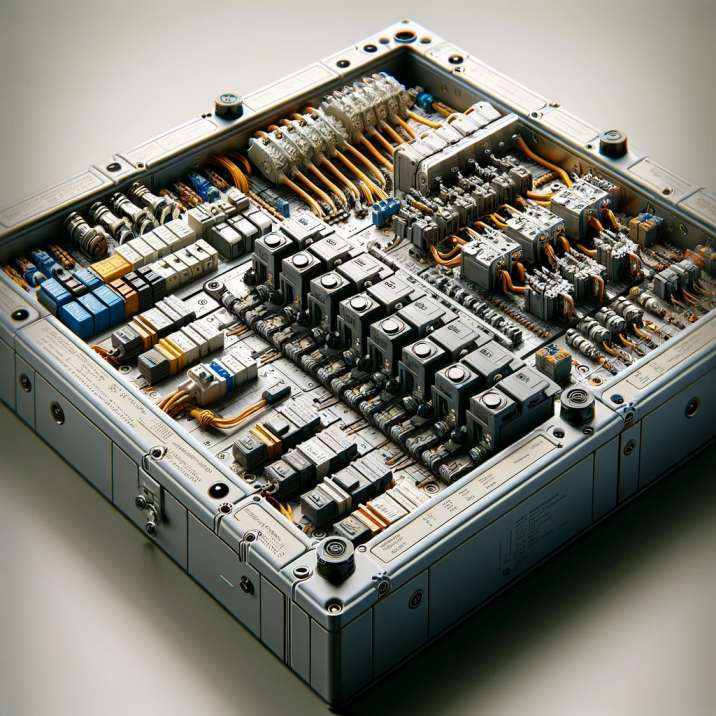Imagine this for a second: sunlight directly powering your coffee machine, toaster, and even your smart TV. Sounds like a science fiction movie? It’s not. You can benefit from solar panels in this way. However, comprehending them can get a little challenging, particularly when concepts like “amps,” “volts,” and “watts” are involved. Be at ease! I’m here to make things easy and enjoyable.
Solar panels: what are they?
Consider solar panels as enormous sun-absorbing sponges! Solar panels use light from the sun to create electricity that can be used in our homes for everything from refrigerators to phone chargers.
An Introduction to Electrical Terminology
In our wild universe of electricity, there are some key characters you should know about: Current (the big ‘A’ – Amps), Voltage (the mighty ‘V’- Volts) and Power (the powerful ‘P’, as in watts).
Understanding Current (Amps)
If electricity was a river, Amperage or amps would be the rate of flow. It’s basically how fast electrons are bolting through a wire. More amps mean more electrons, which translates into more electricity.
Understanding Voltage (Volts)
Voltage is like the push forcing electrons down the wire – consider it the electric pressure. So, when you turn on that coffee maker in the morning using high voltage, you’re basically saying “Go, electrons, Go!” with more enthusiasm!
Understanding Power (Watts)
Finally, Watts or power is what actually makes our appliances work. It’s a combo of volts and amps. When the pressure of our volts meets the flow rate of our amps – pow! – we get electrical power!
Overview of How Solar Panels Work
Beautiful sunny days are more than just perfect picnic times. The sun is the ideal temperature for solar panels to operate. It’s amazing how solar panels, which have a lot of tiny cells inside, use the “Photovoltaic Effect” to convert sunlight into power.
Factors that Affect Electric Current in Solar Panels
You’ll often see your solar panels soaking up all that sunny goodness, but ever wonder what’s going behind the scenes?
Size of the Solar Panel
Pretend for a moment you’re a solar panel. Would you rather be a small beach towel-size or a much larger king-size blanket? I know, king-sized does sound comfy! Bigger panels catch more sun and produce more current.
Sunlight Exposure
A no-brainer, right? If you’re stuck in the shade, you won’t soak up much sun and won’t produce as much electrical current. It’s like trying to get a tan under an umbrella – Not exactly efficient.
Temperature
This might surprise you – head spinning, eyebrow raising surprise! Too high a temperature isn’t good for solar panels. They start acting out like tired toddlers in need of their afternoon nap! So cooler temperatures actually keep your panel performing at its peak.
Angle and Positioning of the Panel
Believe it or not, your solar panels are total sunbathing enthusiasts – they like to face the sun directly! But their favorite direction is south, where they can catch rays all day long. And just like your favorite lawn chair, the angle can make a big difference in catching those rays.
How to Calculate the Amps a Solar Panel Produces
Have you ever wondered how much electricity your solar panel actually produces, or more specifically, how many amps? No need to get your detective glasses out. It’s often mentioned right there on the manufacturer’s label. Pretty straightforward, isn’t it?
Label Checking and Manufacturer’s Information
Like nutritional labels on your favorite cereal box, amps and other interesting numbers are provided by the manufacturer on the back label. This info includes maximum amps under ideal conditions—referred to as Imp (current at max power) and Isc (short circuit current). Apologies for those strange terms – That’s just electrician lingo!
Mathematical Calculations and Examples
If you feel like getting your math geek on, here’s how you do it: divide panel wattage by panel voltage for an estimate of amp production. Oh look at you – going all Albert Einstein-ish!
Relationship between Amps, Voltages, and Power Output
Your coffee maker needs more ‘oomph’ than charging your phone, right? The ‘oomph’ is thanks to more electrons zooming around faster with extra enthusiasm! Bringing together everything we’ve learned: volts give the push, amps provide the speed, and together – bam! We get that much-needed power.
The concept of Ohm’s Law
Enter stage left: Ohm’s law. An electrifying (pun totally intended) law of physics that ties everything together. Simply put, Voltage = Amps x Resistance. In most cases, resistance is constant so if amps go up, voltage comes down and vice versa! It’s like using a seesaw!
Real-world Scenarios and Calculations
Let’s apply this to our real world for a moment. Ever noticed your lights dim when the fridge kicks on? More voltage is needed to start that beastly appliance, causing a drop in voltage elsewhere – hence your momentary mood lighting!
Different Types of Solar Panels and Their Amp Output
Did you know solar panels come in three main flavors – each with their own sweet and sour points? Let’s get introduced.
Solar Panels with Monocrystalline Structure
The ubiquitous monocrystalline panels are stylish and effective, akin to the little black dresses of solar panels. They give you high performance even in limited space but touchdown on the pricey side.
Solar Panels with Polycrystalline Structure
Our next contestant: The Polycrystalline Panels! These look like a beautiful mosaic, are pocket-friendlier but sadly, don’t gulp down as much sun as their monocrystalline friends.
How to Maximize the Current of Your Solar Panel
We’ve covered quite some ground!With all we’ve learnt, let’s jump into how to make your solar panels super productive – just like giving them a shot of solar espresso!
Optimal Installation Tips
Remember the idea of your panels facing south and being at an angle? Well, that wasn’t just solar panel chit-chat. This installation helps maximize sunlight exposure which means—you got it—more power!
Maintenance for Maximum Efficiency
Just like you feel refreshed after a great shower, solar panels love a good clean. Dust, bird droppings, or leaves can create a ‘shade-effect’, reducing their efficiency. So keep ‘em clean and they’ll keep you powered!
Limitations and Solutions for Amp Output in Solar Panels
Even though solar panels are the superheroes of clean energy, they aren’t invincible. But don’t worry, most limitations have suitable solutions.
Shading Issues and Solutions
A teeny tiny bit of shade might seem harmless, but it’s like kryptonite to your solar panel. Even a leaf can affect production! But fret not, friends. Regular cleaning and proper positioning away from looming trees or structures can help keep the shadow villain at bay.
Weather Impact on Output and Mitigations
Even when it’s a rainy Monday, and all you want is to cozy up with your favorite book, guess what – your solar panel is still working! Power output drops with cloudy weather or rain, but hey, some power is better than no power. For snowy days, throwing snow melting cables into the mix helps ensure maximum efficiency.
Can URE Solar Panels Produce the Same Amount of Amps as Other Solar Panels?
When conducting a comprehensive review of URE solar panels, it’s important to consider their amp output compared to other solar panels. While URE panels are known for their high efficiency and durability, they may not always produce the same amount of amps as other panels.
Converting Solar Power for Home Use
This is where things get exciting. How does this natural energy find its way into making your coffee or powering your laptop for those late-night movie marathons? That’s where inverters come to play!
Using Inverters: Change DC to AC
Solar electricity starts as DC – Direct Current. However (plot twist!), homes in general utilize AC – Alternating Current. An inverter acts like an interpreter between the two currents, making sure that every bit of electrical goodness gets put to good use!
Stay Safe with Correct Amp use in Household Appliances
A pivotal part of this solar saga is safety. Your solar energy supply must match the electrical load of your appliances. Just like wearing the right size shoes is important, so is providing the right amount of amperage to your devices!
Understanding Solar Panel Certification and Standards
Every field has its heroes setting high standards, and it’s not different when it comes to solar panels.
Certifications Ensuring Product Quality
Like a seal of excellence, certifications help ensure that your panels are top notch. They’re verified for performance and safety by international standards – so rest easy knowing you’ve got good quality stuff on your roof.
Importance of Meeting Electrical Standards
Solar panels need to satisfy other home-safe standards too! These cover aspects ranging from fire safety to even their ability to withstand hail storms. It’s like making sure they have more than just good grades before they graduate into your home!
Conclusion
Who knew understanding solar panel current could be such an adventure? From understanding how the sun’s rays turn into electricity through all the scientific drama, you’re now well-versed in the art of solar power amps. Beam with pride in your newfound knowledge: You’re ready for a powerful life in harmony with nature!


